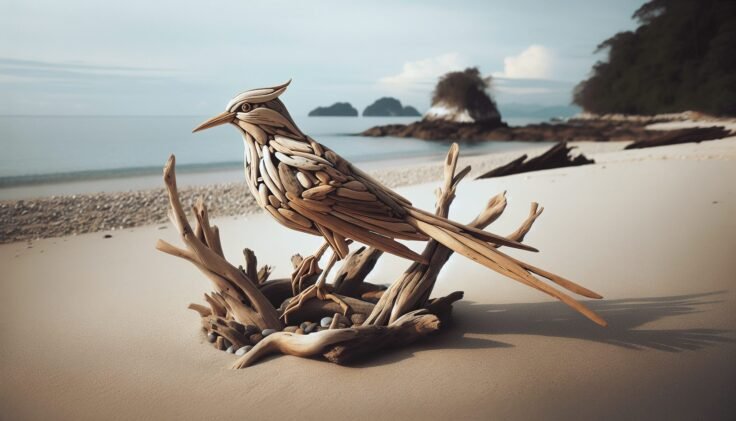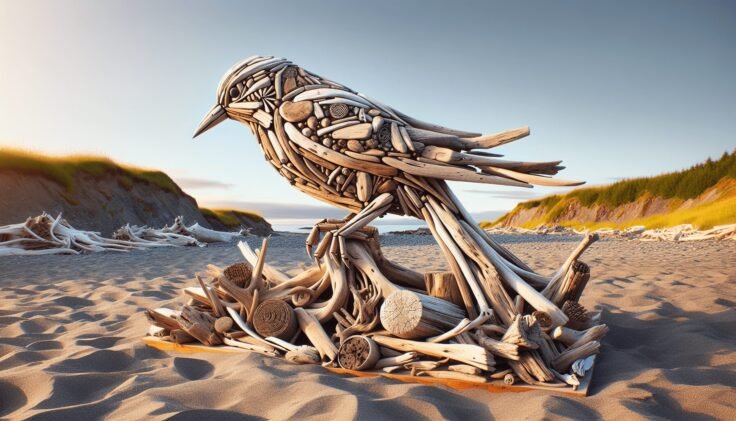Have you ever come across the natural artistry of driftwood scattered along a beach or riverbank and felt inspired by its unique forms and textures? Driftwood images capture this beauty and transform it into a personalized piece of art that tells a story. There’s a world of wonder that exists in the graceful curves, gnarled shapes, and weathered surfaces of driftwood. It’s not just about collecting pieces of sun-bleached wood; it’s about capturing a moment where nature’s artistry meets your creativity. Let’s explore how you can create stunning driftwood images, from selecting the ideal pieces to photographing them under the perfect light.
Understanding Driftwood
What is Driftwood?
Driftwood is wood that has been washed ashore by the action of tides or waves. Over time, it is weathered and bleached by the sun, water, and wind. This natural process creates intriguing textures and shapes, making driftwood a sought-after material for artists, photographers, and interior decorators. The journey of each piece can be imagined through its unique character and features.
The Origins of Driftwood
Driftwood originates from fallen trees and logging residues that end up in bodies of water. The currents carry them across long distances, smoothing rough edges and stripping away bark. Each piece of driftwood tells its story depending on its origin, type of wood, and the journey it’s undergone. The character of driftwood adds uniqueness and personality to any image captured.
Why Driftwood Images?
Natural Aesthetic Appeal
Driftwood images have a natural and raw beauty that appeals to many people. The intricate patterns and lines found in driftwood can be mesmerizing and offer an organic aesthetic that’s difficult to replicate with other materials. Capturing this in an image can bring the outdoors into any space, creating a calming and serene atmosphere.
Versatility in Art and Decor
Driftwood images are versatile and can be used in various artistic and decorative contexts. Whether you frame them, print them on canvas, or use them for digital backgrounds, they add a rustic charm that complements both modern and traditional styles.

Creating Your Driftwood Image
Selecting the Right Driftwood
The first step in creating your driftwood image is selecting the right pieces. Look for driftwood that has interesting shapes, textures, and patterns. Smaller pieces work well for a more delicate and intricate composition, while larger pieces can create a dramatic focal point.
Preparing Your Driftwood
Once you’ve gathered your driftwood, clean it thoroughly to remove any sand, dirt, or algae. You can soak it in a solution of water and mild dish soap for a few hours, then scrub gently with a brush. Rinse well and let it air dry completely before capturing your images.
Photographing Driftwood
Choosing the Right Lighting
Lighting can dramatically influence your driftwood images. Natural light, especially during the golden hours (just after sunrise or before sunset), provides a warm and soft glow that enhances the texture and color of driftwood. Alternatively, you can experiment with artificial lighting for more control over shadows and highlights.
Composition Techniques
Think about the composition of your image. Consider the rule of thirds, where you position the driftwood off-center for a more balanced shot. Use leading lines to guide the viewer’s eyes through the image, and create depth by overlapping various pieces of driftwood.
Close-Up Shots
Close-up shots can reveal the intricate textures and details of driftwood. Use a macro lens to capture the finer aspects, like the grain, knots, or tiny imperfections that make each piece unique. These images can stand alone or complement wider shots that provide context.

Editing Your Driftwood Images
Adjusting Colors and Tones
Post-processing can enhance your driftwood images significantly. Adjust the color tones to bring out the natural hues of the wood, making them more vibrant or muted based on the mood you want to convey. Tweaking the contrast can also help accentuate the texture of the driftwood.
Enhancing Texture
Emphasizing the texture of driftwood is crucial in post-processing. Use sharpening tools to define the wood’s surface detail further. Play with clarity settings to give the image a crisp, detailed finish that showcases the intricacies of the driftwood.
Creative Uses for Driftwood Images
Wall Art
Turn your driftwood images into striking wall art by printing them on canvas or high-quality photo paper. Whether it’s a single statement piece or a series of images, driftwood art can add a touch of nature to any room.
Digital Backgrounds
The organic and intricate patterns found in driftwood images can also serve as eye-catching digital backgrounds. Use them for your computer desktop, phone wallpaper, or social media covers to have a bit of nature with you at all times.
Eco-Friendly Projects
Driftwood images symbolize a connection with nature and can inspire eco-friendly projects. Consider pairing them with recycled materials for DIY home decor that reflects sustainable practices.
Selling Driftwood Images
Creating an Online Portfolio
If you want to share or sell your driftwood images, creating an online portfolio is a great place to start. Use platforms like Instagram, Behance, or your personal website to showcase your work and reach a wider audience.
Marketing Your Art
Success in selling your driftwood images depends on effective marketing. Utilize social media, blogs, and online communities dedicated to art and photography. Engage with potential buyers by sharing the stories behind your driftwood and the images you capture.
The Meditative Art of Driftwood Photography
Capturing driftwood images is not just about creating art—it’s a meditative practice that connects you with nature. Each piece of driftwood, with its unique form and history, offers a sense of serenity and contemplation. As you photograph, edit, and share these images, you engage in a creative dialogue with the natural world, finding peace in its timeless beauty.
In exploring driftwood images, you embark on a creative journey that combines artistry, nature, and personal expression. From selecting the perfect piece to capturing its story through your lens, you celebrate the organic beauty that driftwood offers. Whether for personal enjoyment, home decor, or a creative enterprise, driftwood images are a testament to nature’s unrivaled artistry and your unique perspective.


















